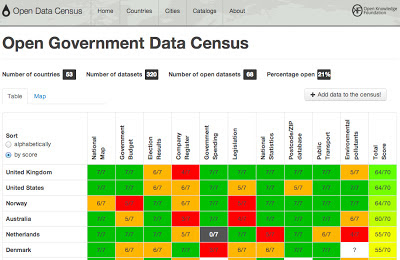This includes the new Australian Government beta data.gov.au site, the new South Australian government's data.sa.gov.au and the NSW government's new data.nsw.gov.au/data/.
We also have Queensland's data.qld.gov.au, Victoria's data.vic.gov.au and the ACT's data.act.gov.au (which uses Socrata) at state level.
Tasmania, Western Australia and the Northern Territory have yet to launch open data sites, although I know at least two of these jurisdictions are considering how they begin.
It's fantastic to see Australian jurisdictions opening up their data, as well as the increasing mandate at political levels, highlighted by Queensland's appointment last year of an Assistant Minister for eGovernment, and the recent Australian Government announcement that they were joining the international Open Government Partnership (OGP).
However, let's hold the horses here a moment.
Why are Australian jurisdictions each launching their own open data site when we could have a single whole-of-government site - which would provide easy access to any data, from any Australian jurisdiction, side-by-side?
Why not set common naming conventions for datasets across jurisdictions, common data formats for its release and common field (and field names) in each common dataset?
Unfortunately this fragmented approach is still the reality for Australia - even when there's a commitment to the same direction or approach, various governments prefer to 'go their own way' rather than work together to save costs and improve efficiencies.
Each jurisdiction sees itself as a 'special case' and there's limited capability across governments to coordinate a single solution that wouldn't get mired in politics - at both political and bureaucratic levels.
So while Australia is stepping forward with open data, it's also revealing the issues in our system of government. Cost-efficiency is often trumped by political advantage or concerns that certain jurisdictions are not carrying their 'fair share' of the load.
Given it is unlikely that jurisdictions will solve these issues quickly - what I would really like to see out of GovHack this year is a project that aggregates all of Australia's open data into a single repository, matches it and presents it in a common data format.
This would allow people seeking common datasets from different jurisdictions to find them all in one place and use them easily due to a consistent format, rather than having to go to six or more sites to find the data and having to convert it for use.



